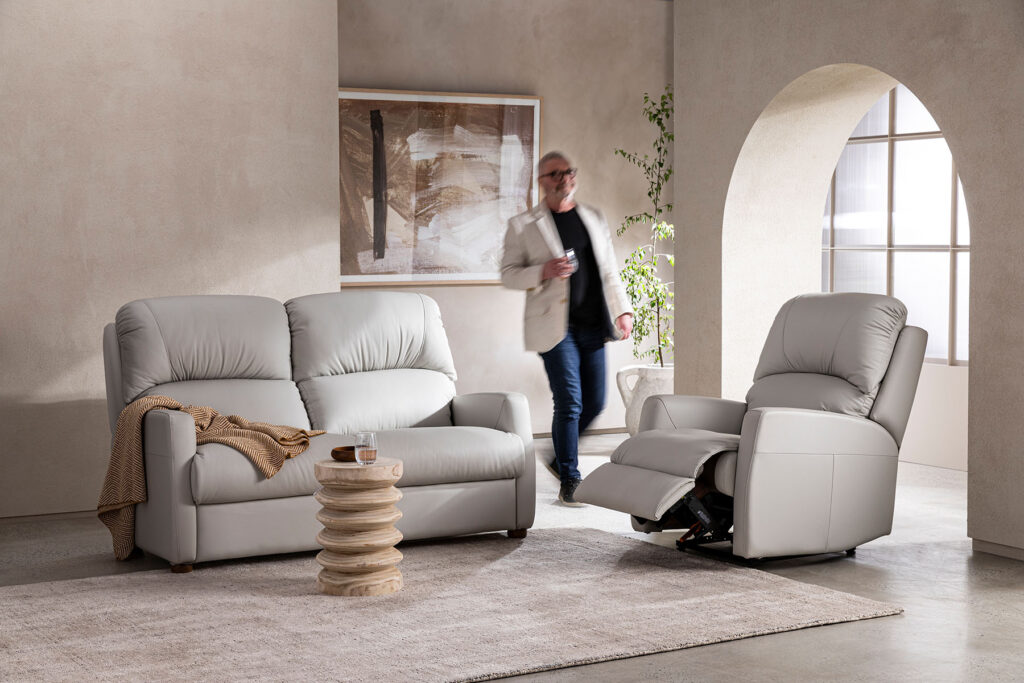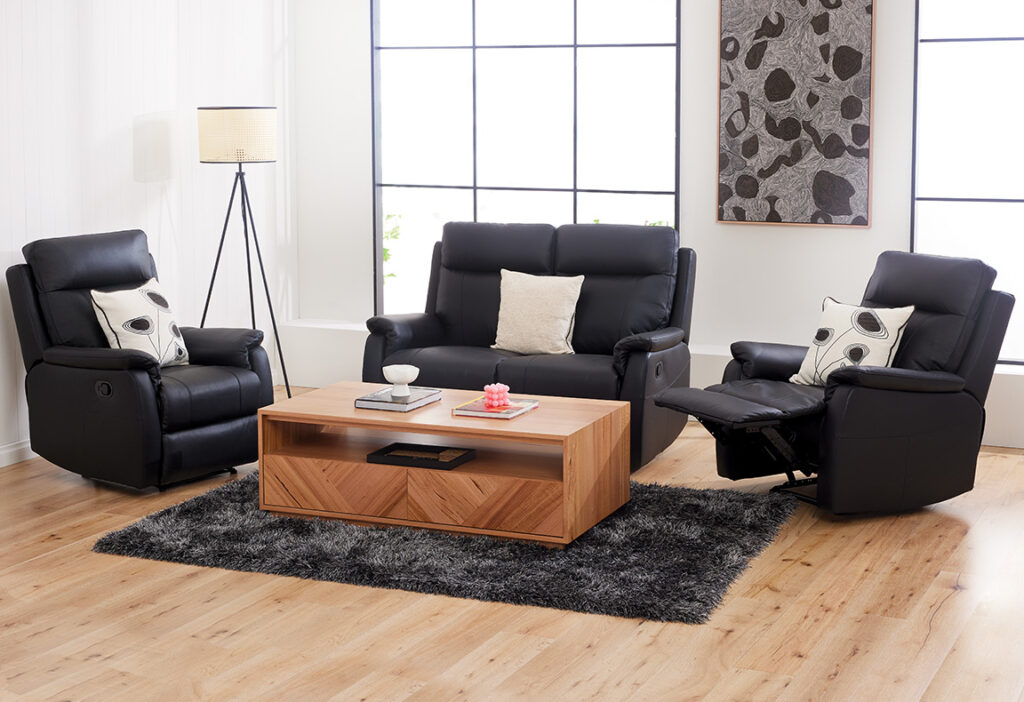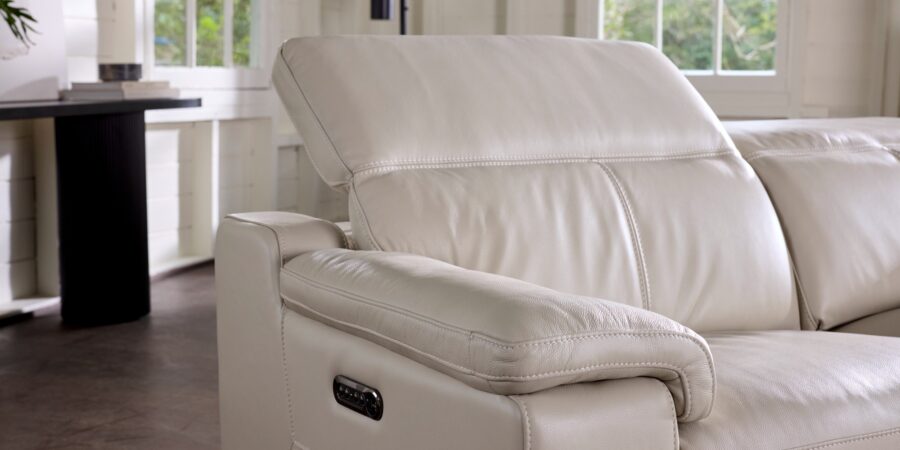When it comes to adding a touch of comfort and elegance to your living space, few pieces of furniture can rival the luxurious feel of a leather recliner sofa. Not only do they provide unparalleled relaxation, but they also enhance the aesthetic appeal of any room. In this article, we delve into the allure of these remarkable sofas and explore why they have become a cherished choice in Australian homes.
Understanding the allure of leather recliner sofas
The charm of leather recliner sofas lies in their blend of comfort and style. For many homeowners in Australia, these sofas represent a perfect sanctuary for unwinding after a long day. But what truly contributes to their irresistible allure? Let’s take a closer look.
The history of recliner sofas
The concept of reclining furniture dates back to the 19th century when inventors began creating chairs that allowed users to lean back and put their feet up. The modern recliner sofa, however, gained popularity in the mid-20th century as technology improved, allowing for more sophisticated reclining mechanisms. Over the decades, designs have evolved, yet the core function—providing comfort—remains unchanged. The introduction of electric recliners in the late 20th century further revolutionised the market, making it easier than ever for individuals of all ages to enjoy the luxury of reclining with just the push of a button. This innovation not only enhanced user experience but also expanded the demographic of those who could appreciate the benefits of reclining furniture.
Why leather is a top choice for upholstery
Leather has long been regarded as a premium material for furniture, and for good reason. Its luxurious look, coupled with its soft texture, makes it incredibly inviting. In addition, leather is known for its ability to age beautifully; over time, it develops a distinct character that enhances its appeal. Moreover, leather is surprisingly versatile, fitting seamlessly into both contemporary and traditional design aesthetics. The maintenance of leather is also relatively straightforward, requiring only occasional conditioning to keep it supple and prevent cracking. This practicality, combined with its aesthetic advantages, makes leather an enduring favourite among homeowners. Furthermore, the natural breathability of leather ensures comfort throughout the seasons, providing warmth in winter and a cool surface in summer, which is particularly beneficial in the diverse Australian climate.

The benefits of leather recliner sofas in Australian homes
The advantages of owning a leather recliner sofa are numerous, making them a valuable addition to any household. Let’s explore some of the most compelling benefits that make these sofas so sought after by Australian homeowners.
Comfort and relaxation redefined
There’s something undeniably luxurious about sinking into a leather recliner sofa. With adjustable reclining positions, users can find the perfect angle for relaxation, whether they’re watching television, reading a book, or taking a nap. Many models also come equipped with features like built-in footrests and cup holders, taking comfort to the next level. The plush cushioning and ergonomic design of these sofas ensure that you can unwind after a long day, providing a sanctuary where you can escape the stresses of everyday life. Furthermore, the tactile sensation of leather adds an extra layer of indulgence, making it a favourite spot for family gatherings and cosy evenings in. Read more about increasing comfort and relaxation at https://www.health.harvard.edu/mind-and-mood/six-relaxation-techniques-to-reduce-stress
Durability and longevity of leather furniture
One of the most significant advantages of leather is its durability. Unlike other materials, leather can withstand the rigours of daily use without showing signs of wear and tear. It’s an ideal choice for families with children or pets, as it’s generally resistant to scratches and spills. When properly cared for, a leather recliner sofa can provide decades of comfort. Additionally, leather develops a unique patina over time, enhancing its character and charm, which can be particularly appealing to those who appreciate the beauty of aged materials. This natural ageing process means that each piece tells its own story, making your sofa not just a piece of furniture, but a cherished part of your home’s narrative.
Choosing the right leather recliner sofa
Investing in a leather recliner sofa is an important decision that warrants careful consideration. With so many options available, how do you choose the right one for your home? Here are some factors to keep in mind.
Factors to consider when buying
Begin by evaluating your space. Measure the area where you plan to place the sofa to ensure it fits comfortably. You’ll also want to consider the style and colour that complement your décor. Finally, think about the functionality you need—do you require a manual recline, or would you prefer an electric option?
Popular leather recliner sofa styles
Leather recliner sofas come in various styles to suit different tastes. For instance, the classic. Chesterfield style exudes traditional elegance, while sleek, modern designs offer a contemporary edge. Additionally, sectional recliners provide ample seating and flexibility for larger living areas.
Care and maintenance of your leather recliner sofa
Caring for your leather recliner sofa is essential to ensure it remains as stunning as the day you brought it home. Proper maintenance will help prolong its lifespan and keep it looking pristine.
Regularly dust your sofa with a soft cloth to prevent dirt accumulation. For deeper cleaning, use a leather cleaner specifically designed for the material. It’s important to test any product on a small, inconspicuous area first. Avoid using harsh chemicals or excessive water, as these can damage the leather. Click here to learn more about cleaning your leather sofa.

Ensuring your recliner sofa lasts a lifetime
In addition to cleaning, conditioning your leather sofa every few months will help maintain its suppleness. Investing in a high-quality leather conditioner ensures it remains moisturised and less prone to cracking. It’s also advisable to avoid placing your recliner sofa in direct sunlight, as consistent exposure can fade the leather over time.
The environmental impact of leather recliner sofas
As consumers become more environmentally conscious, understanding the environmental implications of our furniture choices is vital. Leather production often raises questions about sustainability.
Leather production and sustainability
While leather is a natural material, its production can have significant environmental effects. Sustainable practices are crucial to reducing the carbon footprint. Many brands now source leather from environmentally responsible tanneries that prioritise low-impact methods and treat waste responsibly.
The eco-friendly side of leather furniture
Despite the concerns surrounding leather production, it’s worth noting that leather is biodegradable—unlike synthetic upholstery. Moreover, its durability means it typically lasts longer than synthetic alternatives, resulting in less waste over time. By choosing leather, consumers often invest in longevity and sustainability.
In conclusion, leather recliner sofas provide the perfect blend of comfort, style, and durability, making them an ideal choice for Australian homes. With proper care, these plush seats can enhance your living space for years to come, ensuring relaxation is always just a recline away.
Related : Best Chaise Sofas for Small Spaces: Maximising Style and Function






